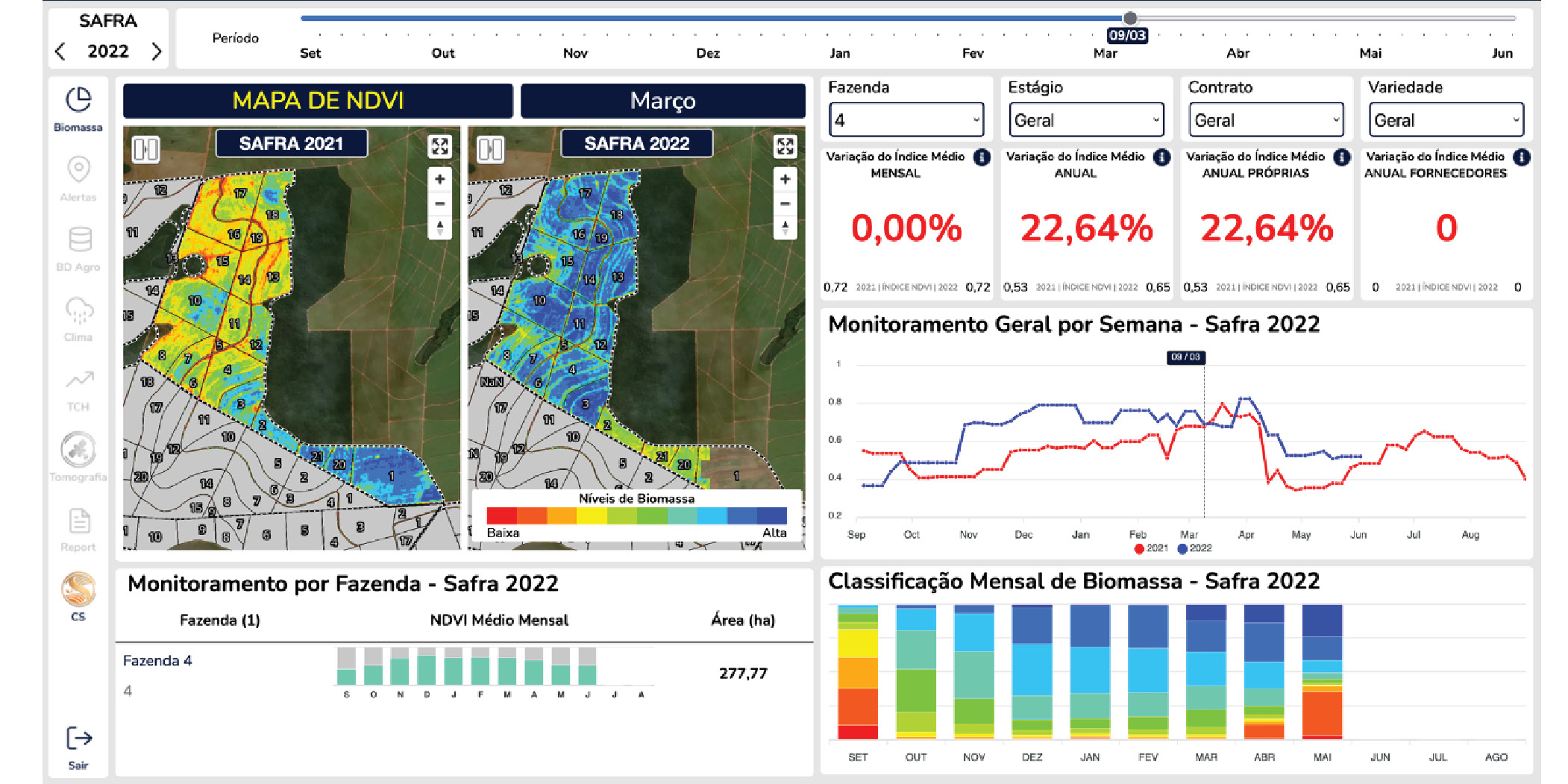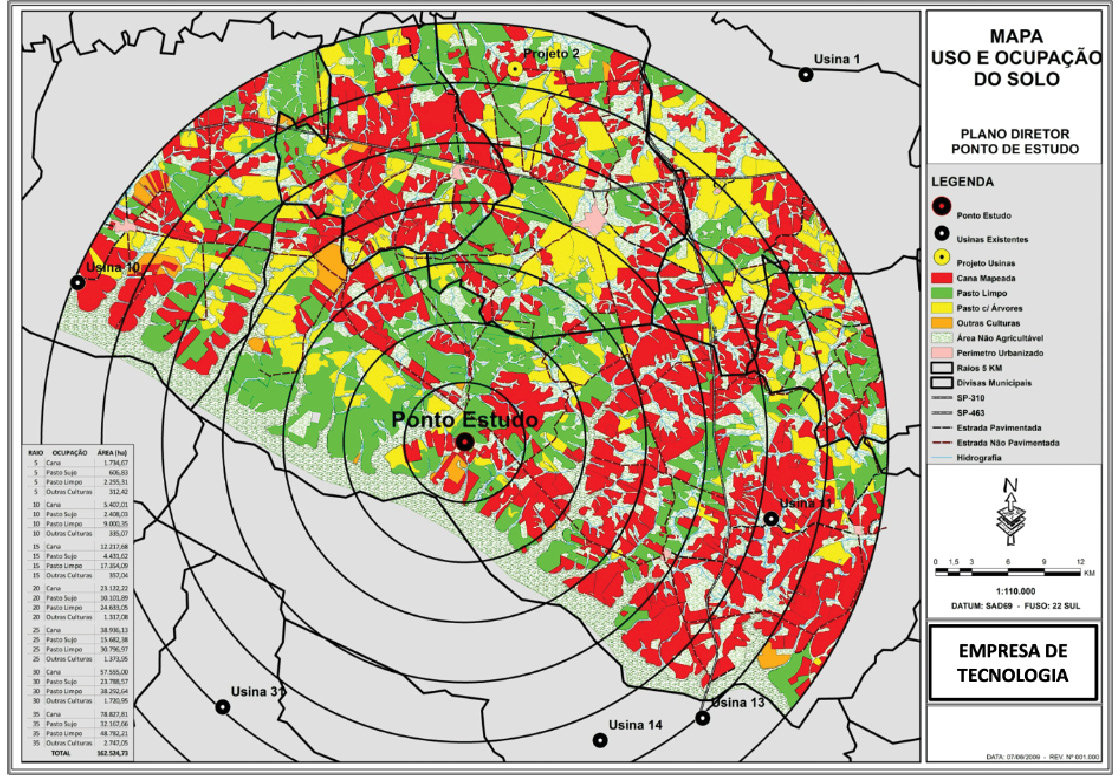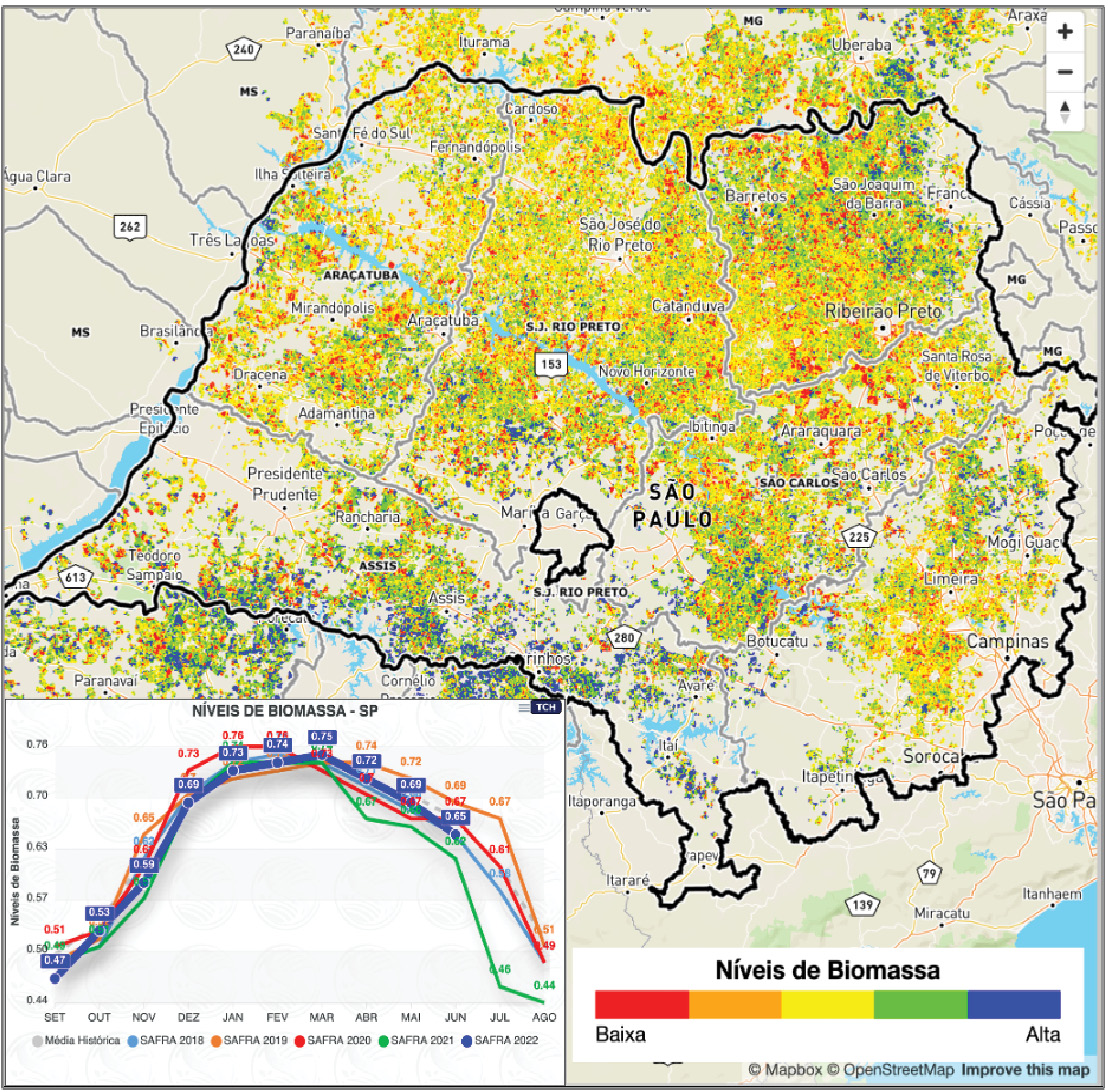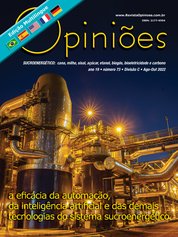Guilherme Dumit
Sigma Geotechnology Digital Director
OpAA73
Remote sensing the game has begun for agricultural managers
In the last 15 years, the sugarcane production model has undergone an enormous technological change. Part of this is caused by the legal and environmental requirement to reduce (and eliminate) the “burnt sugarcane” production system, and another part, by the natural evolution of technologies, on-board computers, real-time monitoring of equipment, machines and trucks.
The concept of Agriculture 4.0 has advanced as a wave in the entire production system, with technologies that have increased agricultural activities of soil conservation and preparation, mechanized planting, cultural treatments and mechanized harvest management, identification of soil pests, weed control, automated spraying, genetic improvement of varieties and so on.

In fact, we have seen a revolution in the management and efficiency of mechanized operations, efficiency in preventive mechanical maintenance and important optimizations in the use of equipment and machines, with a strong positive impact on the companies' budget. The entire production system showed real gains, better quality in operations, greater safety for employees, important reductions in operating costs, improvements in the companies' image and their relations with society and the environment.
It is commented, in the companies, that, despite all this technological evolution (especially in mechanized activities), no significant changes were observed in agricultural productivity (Tons of Sugarcane per Hectare) in recent years. This has been the great challenge of current agricultural managers. Faced with this challenge, it has become essential to evaluate the best technologies to monitor the behavior of the sugarcane field, the biological heritage of sugarcane, in order to mitigate possible causes of this stagnation of yields.

In this sense, there has recently been a great evolution in the use of remote sensing resources for the effective temporal monitoring of cane and sugar. Satellites equipped with optical sensors that temporally capture images of the earth's surface at a distance have definitely entered the game of agricultural management by companies.
More traditional agricultural managers remember how challenging it was to carry out an estimate of sugarcane walking along the carriers and looking horizontally at the “side of the cane” and predicting their yields. Just as there was an occasional flight by plane or helicopter (once or twice a year) to see the cane field from above, its strengths and weaknesses.
Also challenging was to precisely define the areas of reform blocks only with a visual and horizontal analysis of the cane field. Today, digital platforms that use weekly satellite images are available to managers, which classify the levels of biomass, Normalized Difference Vegetation Index, humidity present in the leaves, Normalized Water Difference Index of each plot, farm, pointing out the curve evolution or involution of the cane field and its trends in final production, Tons of Cane per Hectare and Total Recoverable Sugar.
Agricultural managers walk in the field with their cell phones in hand, fed with recent satellite images interpreted with the technology of Normalized Difference Vegetation Index, indicating the biomass levels of each stand, alerts of areas from the 1st to the 3rd cut with low productivity, presence of weeds, faults, suspicious areas with soil pests, easy identification of harvestability blocks, georeferenced photos of anomalies whose team the platform itself distributes, in addition to the ease of defining the reform blocks (analyses of Vegetation Index by Difference standardization of candidate areas for reform).
These digital platforms are fed by the agricultural database, cartographic base (georeferenced farm maps), constantly updated, forming a historical set of data (Big Data), driven by algorithms that point out anomalies, alerts and deviations in the behavior of the sugarcane field. the machine working with current and historical data in favor of managers (machine learning).
Note, the illustration that exemplifies a farm with its respective biomass indices (color grid), warnings of the presence of weeds, faults, points of low productivity and spots of the Normalized Difference Vegetation Index, possible presence of soil pests. In fact, these available technologies modernize the current agricultural management model, perform temporal analyzes and allow the identification of future problems and surprises in due time.
Permanent monitoring of sugarcane fields via satellites points out anomalies and allows for preventive actions. The sugarcane field shows its qualities and anxieties in satellite images. It is true that worse than bad news is late news. Another important use of satellite images is related to the use of land around the industrial units. Currently, the levels of regional competition for land use (increase in areas of plantations and expansions) have become a major challenge for managers.
The land around the units is a finite asset (the industrial unit cannot be moved), and, therefore, the values of leasing partnerships for the use of land rise each year (worryingly). A survey via satellites of land use and occupation around the industry helps managers make decisions. With it, it is possible to accurately identify the hectares used for sugarcane, areas with other crops (citrus, eucalyptus, corn, soybeans), areas available in pastures and their respective distances from the industry, in addition to the slope of the terrain and relief.
With this didactic survey in hand, agricultural managers carry out a strategic and exact analysis of the availability of areas for new plantations and crop expansions. See the illustrative figure of a survey of land use and occupation via satellites around the industry and its respective agricultural uses.

On a larger scale, the use of remote sensing techniques (use of satellite images) also makes it possible to analyze and monitor the behavior of the entire sugarcane plantation in the Center South of Brazil, approximately 9 million hectares. Monthly analyzes via satellites allow the evaluation of temporal growth indices of sugarcane, comparing them with previous periods, analyzing the impacts of droughts and frosts and predicting trends in the production of raw material for each harvest, for each region and state of the South Center of Brazil.
See, the illustration of the Center South of Brazil evaluated via satellites, Normalized Difference Vegetation Index and their respective annual monthly comparative growth indexes. Satellite images interpreted with Normalized Difference Vegetation Index technology, recording the historical behavior of sugarcane and allowing a better analysis of future trends. Looking in the rear view mirror, we saw that this entire digital revolution in agriculture has taken place in approximately the last 15 years (a very short period of time).
As we look ahead, with the advancement of digital agriculture, Internet of Things, evolution of remote sensing techniques, satellite images with more and more revisits and better spectral resolutions , greater availability of monitoring sensors, development of better algorithms, Big Data, cloud data storage, internet signal speed, 5G, we are left wondering: what will our agricultural management system and model look like 10 years from now?
Fasten your seat belts. Lots of emotion and work ahead.




